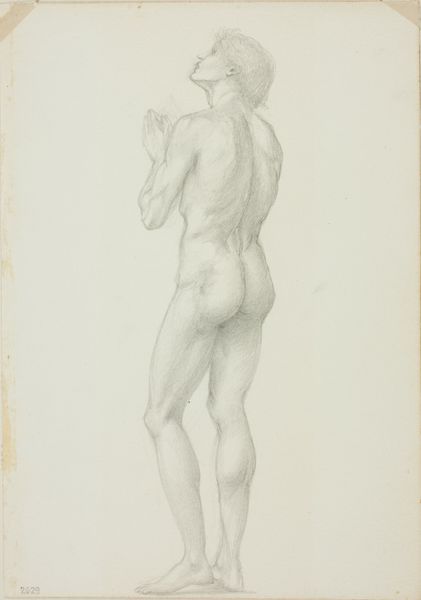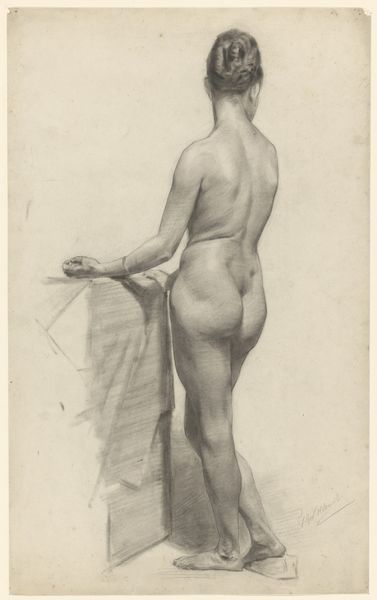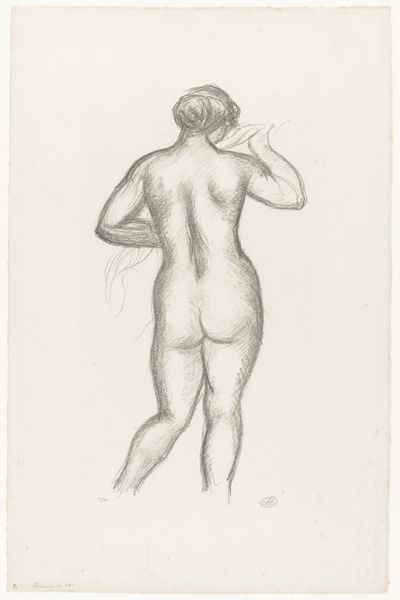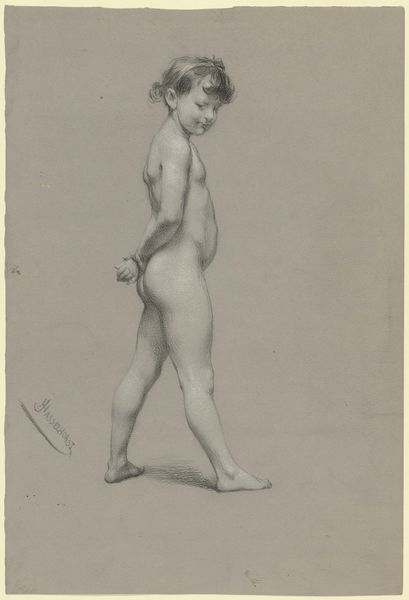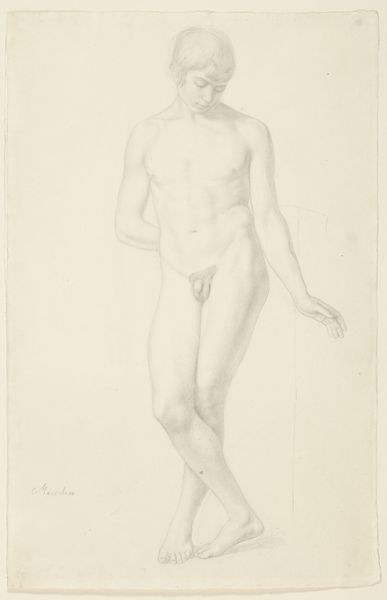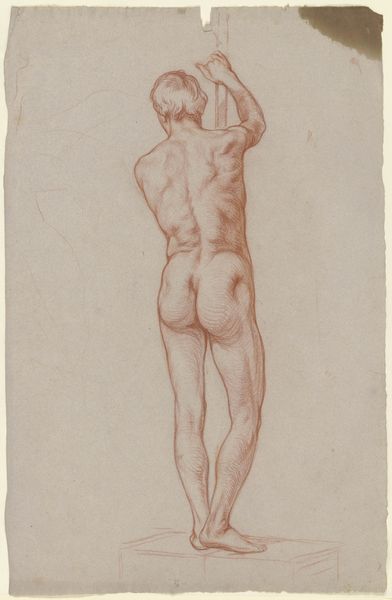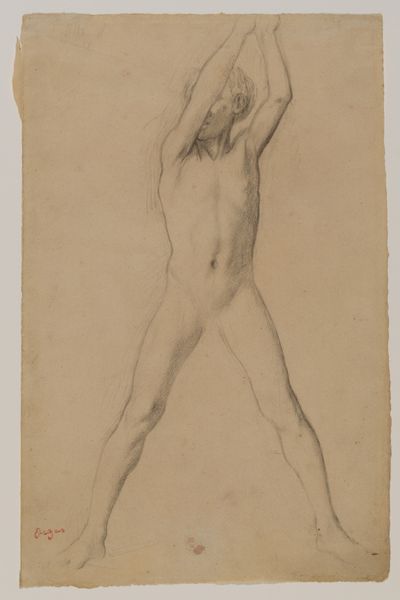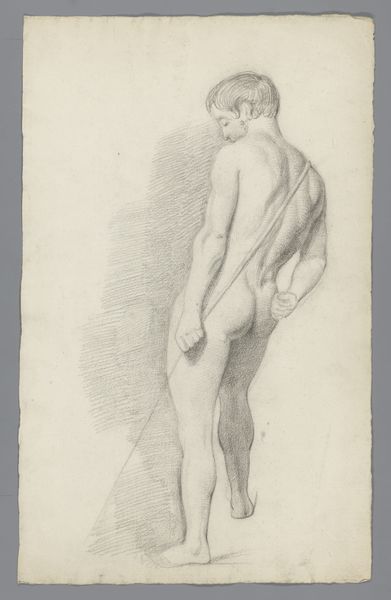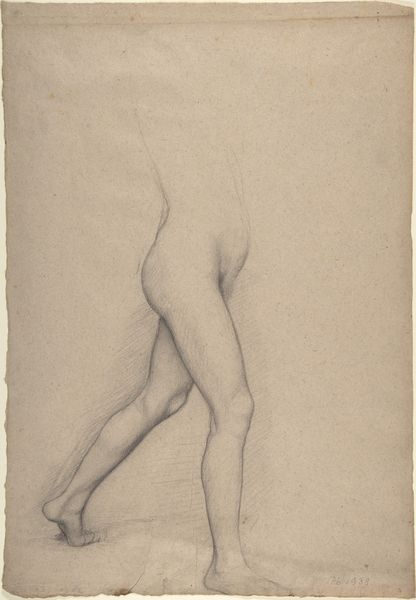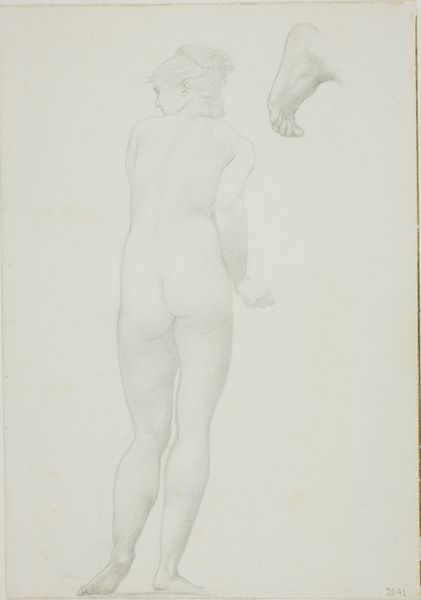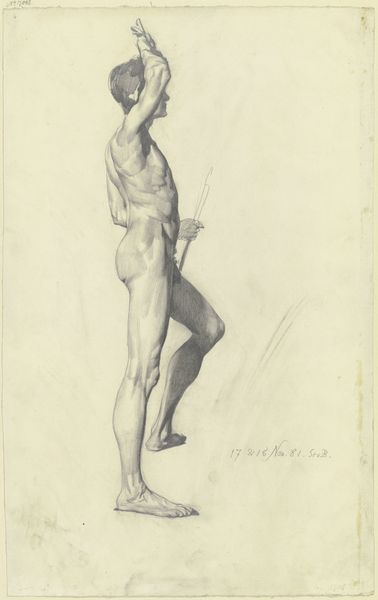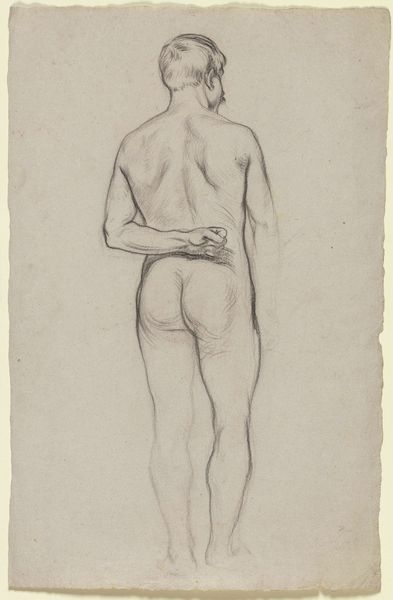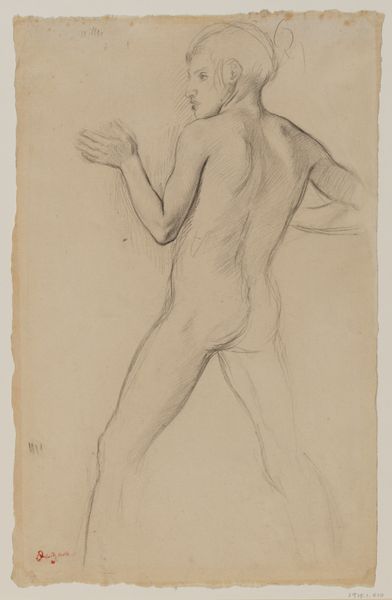
drawing, pencil
#
pencil drawn
#
drawing
#
pencil sketch
#
charcoal drawing
#
figuration
#
form
#
pencil drawing
#
pencil
#
academic-art
#
nude
#
realism
Dimensions: height 437 mm, width 282 mm
Copyright: Rijks Museum: Open Domain
Editor: Here we have "Standing Male Nude, Seen From the Back," a pencil drawing made around 1826 by Alexander Cranendoncq. It’s a strikingly realistic portrayal of the male form, and something about the sketch-like quality gives it a feeling of raw vulnerability. What do you see in this piece? Curator: It speaks to the enduring power of the idealized human form. The classical world valued the nude as a symbol of beauty, strength, and potential. Notice how this echoes through time, visible even in what might seem like a simple study. What sort of statement do you think Cranendoncq was aiming to create? Editor: I hadn't considered that! The ‘Academic Art’ style suggests it’s a study of form, so it would probably be practice. Are there other possible reasons? Curator: The position of the arms feels important. He isn't simply standing; there’s tension, like he is bound or bracing himself, though the lack of hands obscures intention. It hints at the classical contrapposto stance, yet with an element of constraint and modern-day struggles against norms, a tension that invites you, as the viewer, into a narrative. The gaze may follow that trajectory. Editor: It's fascinating how the absent hands can be interpreted so many different ways. I initially thought of it simply as unfinished, but now I’m thinking about intentionality in the drawing as much as what’s drawn. Curator: Indeed. And by recognizing these elements, you've entered into a dialogue with Cranendoncq across centuries! Editor: That makes me feel more connected to the work! Curator: Recognizing symbols enhances meaning; reflecting history amplifies depth.
Comments
No comments
Be the first to comment and join the conversation on the ultimate creative platform.
